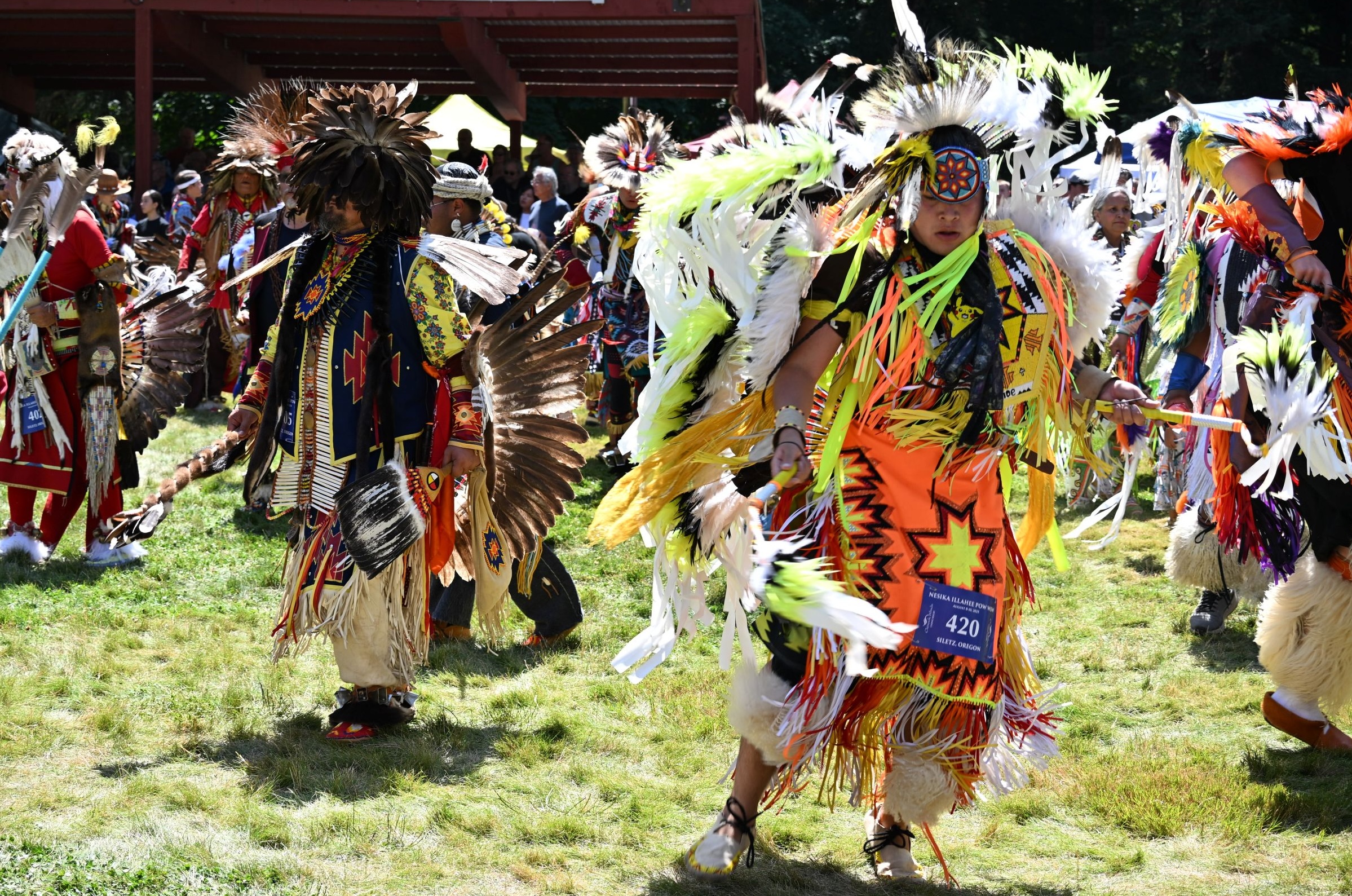
By SHAYLA ESCUDERO/Lincoln Chronicle
SILETZ – Before Ember Hudson prepares to dance, she burns a bundle of white California sage and she prays.
As the smoke wafts around Hudson and her regalia, she clears her eyes, her mind and body to invite peace, kindness, good thoughts and protection. She asks Creator to help her know who needs healing, who needs love and when she dances she will think of them.
“For me these steps aren’t just a dance, it’s reconnecting with Mother Earth, with water and air,” she said. “I feel like when I’m dancing I’m putting my feet on Mother Earth, and my prayer connects me to the other person.”
In the days before the Nesika Illahee Pow-Wow in Siletz, dancers are practicing their footwork, the finishing touches of beadwork is sewn to regalia and cooks are preparing to feed hundreds of people who have come all over the United States to see each other.
“This Pow-Wow is unique to us,” said Tina Retasket, a tribal elder, former council member of the Confederated Tribes of Siletz Indians and event vendor. Pow-Wows originated in the Midwest and each one may look a little different. In Siletz the three-day event which concludes Sunday has a royalty pageant, dancing, competitions, artist and food vendors and finishes with a salmon dinner.
“It’s one of our ways we open up our tribal community,” Retasket said. “We welcome people.”
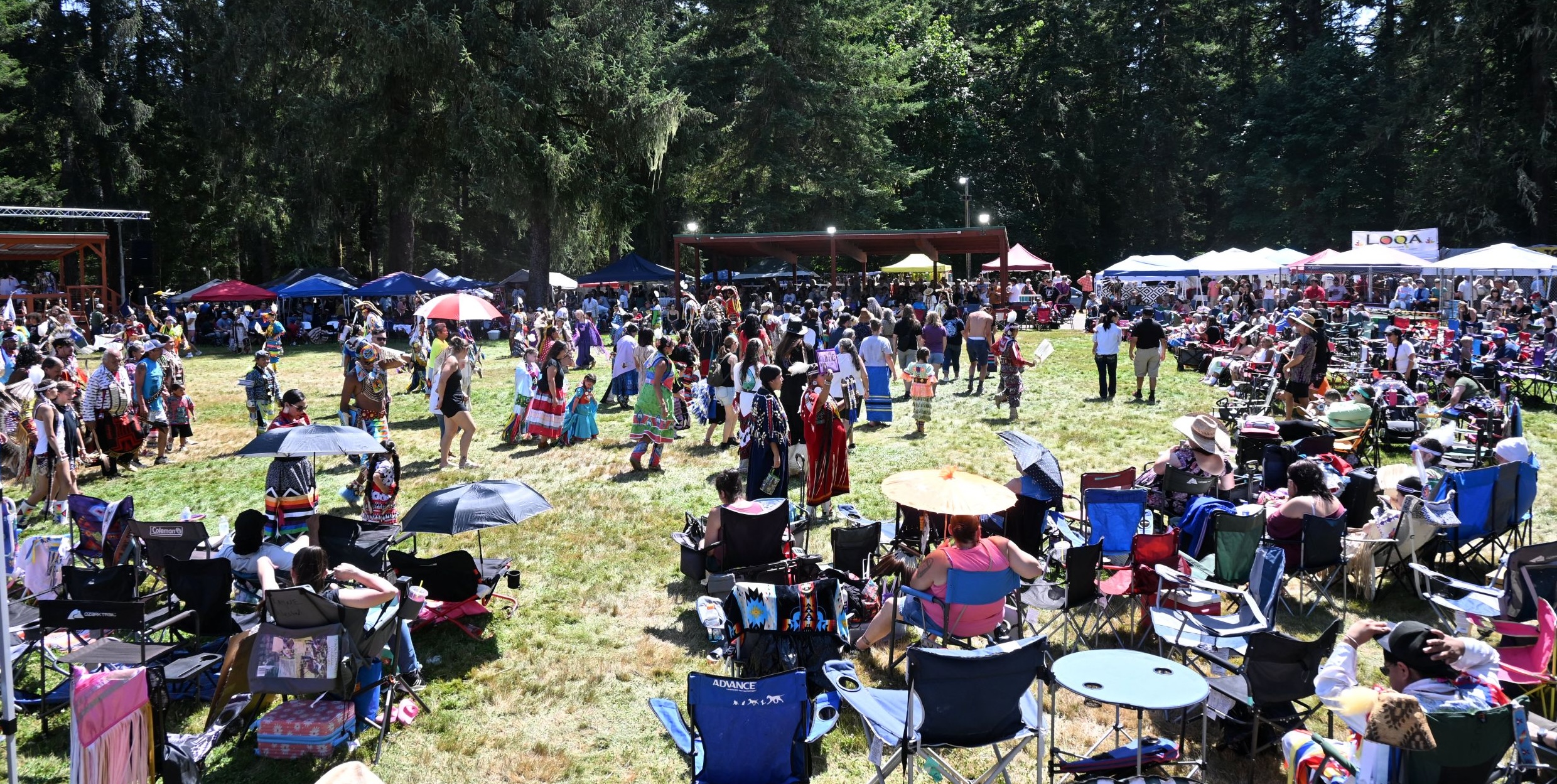
Resilience
The Pow-Wow is a celebration and itself an example of resilience. It’s a time to welcome the community, which might be surprising to some if they knew the history, Retasket said.
Before settlers came to Oregon, Native people lived in large, long plank houses dug into the ground that housed many people besides an immediate family. This space, or a separate dance house, was used as a place where people came together to dance and pray during celebrations.
When Native people were forced to build smaller houses on reservations that only housed immediate family members, it made it difficult for them to partake in their celebrations. Tribal people in Siletz built their own dance houses on the reservation – six of them. When the federal government burned the houses down and they had to pass down their traditions and dances in secret.
“You would think we would be closed off, but we do just the opposite, ” Retasket said. “We make people feel welcome.”
Dancing
When 14-year-old Lexi Jackson dances at Pow-Wow, she honors her mother. Her regalia is sky blue with black bear paw prints on the front and back of her chest – the shape of her mother’s tattoos and the cloth cut from her mother’s Coach bag.
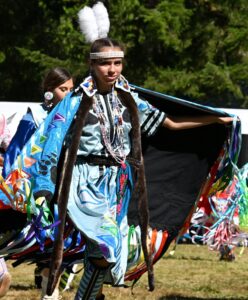
“When I dance I honor the people that have passed, my mom and my grandpa,” she said.
In between dance competition categories, she quickly changes from her fancy dance regalia, replacing her shawl and shimmery dress with a jingle dress adorned with more than 200 silver cones sewn along the skirt.
Saturday is a long day of dancing, beginning in the afternoon for several hours of inter-tribal dances, non-competitive grand entries and dance competitions. Then, it picks up again in the evening.
Each dance has different footwork and meaning. Jingle is a healing dance, while the men’s traditional dance honors warriors and mimics hunting and tracking, Hudson said.
One of Hudson’s favorite dances to watch is the men’s dance towards night, she said. It feels different than during the day, like she can see some of her uncles who have passed dancing with them, she said.
Hundreds of people on Saturday watched from lawn chairs in the sun or from under awnings, often planning in advance to get good seats.
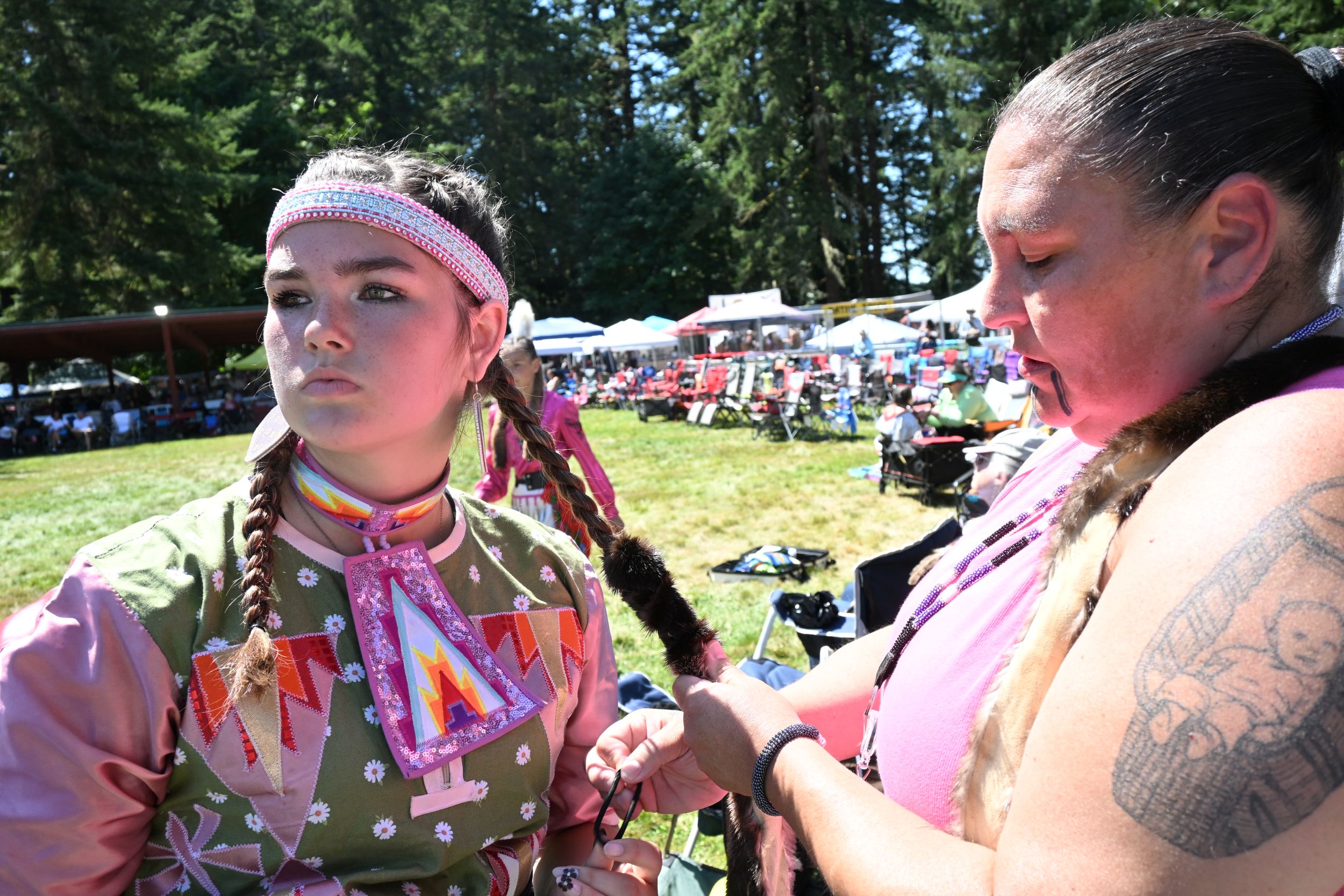
Coming together
“We pick the same spot every year,” Angeline Orona said as she held a parasol to block out the beaming sun from the front row facing the dance arena. Orona works for the Confederated Tribes of Siletz Indians, is a tribal member and has been a part of the Nesika Illahee Pow-Wow from an early age.
Orona carefully wrapped an otter pelt around her niece’s braid. Then she helped her youngest son into his regalia, fastening bells at his ankles and assembling his goose feather bustle.
For Orona there is no distinction of when she started to dance. She knows that her first dance would have been while her mother was carrying her in her pregnant belly. Then again, when she would hold her before she could walk.
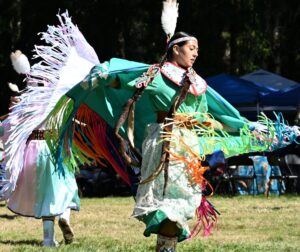
When she got older, her aunties and mentors taught her how to dance with her own feet. Not just dancing the Pow-Wow dance styles but the ceremonial style of dance, the Nee’ Dash or feather dance. And when she was old enough, she competed in the royalty pageant and won titles, including Miss Siletz, where she represented the tribe and toured Pow-Wows across the country.
Now, she watches her sons dance and her family helps cook for the entire Pow-Wow, offering over 500 sack lunches to dancers and drummers and preparing the side dishes for the free salmon dinner on Sunday. In preparation for the big event they had 50 pounds of rice and 75 pounds of corn, she said.
“It’s unique to our Pow-Wow,” Orona said.
In the beginning, before there were many vendors, the meal started as a grassroots way to treat guests, Orona said. Orona’s husband and oldest son will be in the kitchen this year, she said.
Besides the meals Orona’s family makes, there are several food vendors at the event offering fry bread, native tacos, Mexican food, Filipino dishes and a variety of other foods and drinks. Vendors sell beads, shells, ribbon skirts, regalia and artisanal goods.
“It’s a great time to socialize and connect with other natives from different tribes,” she said.
It feels a bit like a family reunion, Retasket said. Not just for the family members you may seldom see that are coming from out of state to celebrate together she said, but your broader Pow-Wow family.
“It’s an exciting time when our little town is full of visitors,” Orona said, “It’s a time to connect with old and new family celebrating and showcasing our way of life.”
- The Nesika Illahee Pow-Wow resumes Sunday at the Pauline Ricks Memorial Pow-Wow Grounds in Siletz. Grand Entry begins at noon and is followed by a salmon dinner. For information about the event and how to get there go to the Siletz Tribe’s website.
- Shayla Escudero covers Lincoln County government, education, Newport, housing and social services for Lincoln Chronicle and can be reached at Shayla@LincolnChronicle.org




















